Old Browser
Looks like you're visiting us from {countryName}.
Would you like to stay on the current country site or be switched to your country?
BD IMag™ Human CD4 T Lymphocyte Enrichment Set-DM
(RUO)



Enrichment of CD4 T lymphocytes from human blood. PBMC were labeled with the BD IMag™ Human CD4 T Lymphocyte Enrichment Set - DM (Cat. No. 557939) and separated on the BD IMag™ Cell Separation Magnet (Cat. No. 552311) according to the accompanying protocol. Cells were stained with APC Mouse Anti-Human CD4 (Cat. No. 555349) to detect CD4 T lymphocytes and a mixture of PE Mouse Anti-Human CD8 (555367), CD11b/Mac-1 (Cat. No. 555388), CD16 (Cat. No. 555407), CD19 (Cat. No. 555413), CD36 (Cat. No. 555455), CD56 (Cat. No. 555516), CD123 (Cat. No. 554529), CD235a (Cat. No. 555570), and γδ TCR (Cat. No. 555717) monoclonal antibodies to detect non-CD4 T leukocytes and erythrocytes. Dead cells were excluded by staining with Propidium Iodide Staining Solution (Cat. No. 556463). Flow cytometry was performed on a BD FACSCalibur™ flow cytometry system. Refer to the Enrichment Flow Chart to identify the cell populations represented. The percentage of CD4 T cells is indicated in the lower-right corner of each panel. Far left panel shows unseparated PBMC. Middle left panel shows the combined enriched fraction after three 6-minute magnetic separations. Middle right panel shows the twice-enriched fraction after an additional 6-minute separation of the cells shown in top right panel. This additional separation step can result in up to 2-6% increased purity with less than a 5% decrease in recovery. Far right panel shows the positive fraction.


log-log Template New.ai

558471_image5
Regulatory Status Legend
未经BD明确书面授权,严禁使用未经许可的任何商品。
描述
The BD IMag™ Human CD4 T Lymphocyte Enrichment Set - DM is used for the negative selection of CD4 T lymphocytes from peripheral blood. The Biotinylated Human CD4 T Lymphocyte Enrichment Cocktail contains monoclonal antibodies that recognize antigens expressed on erythrocytes, platelets, and peripheral leukocytes that are not CD4 T lymphocytes. The BD IMag™ Streptavidin Particles Plus - DM are magnetic nanoparticles that have streptavidin covalently conjugated to their surfaces. With these two components, the BD IMag™ Human CD4 T Lymphocyte Enrichment Set - DM avoids the inadvertent activation of the enriched CD4 T lymphocytes by using reagents that do not directly bind to those T cells. This Enrichment Set has been optimized for use with the BD IMag™ Cell Separation Magnet, and it contains sufficient reagents to label 10^9 peripheral blood mononuclear cells (PBMC).
The CD4 T Lymphocyte Enrichment Cocktail is comprised from the following biotin-conjugated monoclonal antibodies:
Anti-human CD8, SK1
Anti-human CD11b/Mac-1 (CR3), clone ICRF44
Anti-human CD16, clone 3G8
Anti-human CD19, clone HIB19
Anti-human CD36, clone CB38 (NL07)
Anti-human CD56, clone B159
Anti-human CD123 (IL-3 Receptor α chain), clone 9F5
Anti-human CD235a (Glycophorin A), clone GA-R2 (HIR2)
Anti-human γδ TCR, clone B1
准备和存储
推荐的实验流程
The detailed Magnetic Labeling and Enrichment Protocol follows. In summary, the Biotinylated Human CD4 T Lymphocyte Enrichment Cocktail simultaneously stains erythrocytes, platelets, and most leukocytes except the CD4 T lymphocytes. After washing away excess antibody, BD IMag™ Streptavidin Particles Plus - DM are added to the cell suspension and bind the cells bearing the biotinylated antibodies. The tube containing this labeled cell suspension is then placed within the magnetic field of the BD IMag™ Cell Separatoin Magnet (Cat. No. 552311). Negative selection is then performed to enrich for the unlabeled T cells. Labeled cells migrate toward the magnet (positive fraction), leaving the unlabeled cells in suspension so they can be drawn off and retained (enriched fraction). The negative selection is repeated twice to increase the yield of the enriched fraction. If greater purity is required, negative selection may be performed on the enriched fraction. For clarification of the procedure, the magnetic separation steps are diagrammed in the Enrichment Flow Chart. The enriched (and positive) fractions can be evaluated in downstream applications such as flow cytometry and tissue culture. The antibodies in the Biotinylated Human CD4 T Lymphocyte Enrichment Cocktail have been optimized and pre-diluted to provide maximum efficiency for enrichment of CD4 T lymphocytes from PBMC.
MAGNETIC LABELING AND ENRICHMENT PROTOCOL
1. Prepare 1X BD IMag buffer: Dilute BD IMag™ Buffer (10X) (Cat. No. 552362) 1:10 with sterile distilled water or prepare Phosphate Buffered Saline (PBS) supplemented with 0.5% BSA, 2 mM EDTA, and 0.1% sodium azide.
2. Prepare PBMC from anti-coagulated human blood, preferably by density gradient centrifugation using Ficoll-Paque™.*
3. Remove clumps of cells and/or debris by passing the suspension through a 70-µm nylon cell strainer. Count the cells, and resuspend them in 1X BD IMag buffer at a concentration of 10 x 10^6 cells/ml.
4. Add the Biotinylated Human T Lymphocyte Enrichment Cocktail at 5 µl per 1 x 10^6 cells, and incubate at room temperature for 15 minutes.†
5. Wash the labeled cells with a 10X excess volume of 1X BD IMag™ buffer, centrifuge at 300 × g for 7 minutes, and carefully aspirate ALL the supernatant.
6. Vortex the BD IMag™ Streptavidin Particles Plus - DM thoroughly, and add 5 µl of particles for every 1 x 10^6 total cells.
7. MIX THOROUGHLY. Incubate at room temperature for 30 minutes.†
8. Bring the labeling concentration up to 20-80 x 10^6 cells/ml with 1X BD IMag™ buffer.
9. Transfer the labeled cells to a 12 x 75 mm round-bottom test tube, maximum volume added not to exceed 1.0 ml. Place this positive-fraction tube on the Cell Separation Magnet (horizontal position) for 6 to 8 minutes.
- For greater volume, transfer the cells to a 17 x 100 mm round-bottom test tube, maximum volume added not to exceed 3.0 ml. Place this positive-fraction tube on the Cell Separation Magnet (vertical position) for 8 minutes.
10. With the tube on the Cell Separation Magnet and using a sterile glass Pasteur pipette, carefully aspirate the supernatant (enriched fraction) and place in a new sterile tube.
11. Remove the positive-fraction tube from the Cell Separation Magnet, and add 1X BD IMag™ buffer to the same volume as in Step 8. Resuspend the positive fraction well by pipetting up and down 10 to 15 times, and place the tube back on the Cell Separation Magnet for 6 to 8 minutes.
- For 17 x 100 mm tube: Place on the Cell Separation Magnet for 8 minutes.
12. Using a new sterile Pasteur pipette, carefully aspirate the supernatant and combine with the enriched fraction from Step 10 above.
13. Repeat Steps 11 and 12. The combined enriched fraction contains T lymphocytes with no bound antibodies or magnetic particles. These cells are ready for downstream applications, or they can be further enriched by proceeding to Step 15.
14. The positive-fraction cells remaining in the original tube can be resuspended in an appropriate buffer or culture medium for downstream applications, including flow cytometry, if desired.
15. To increase the purity of the combined enriched fraction by another 2-6% (compare Panels B and C in the figure), place the tube containing the combined enriched fraction on the Cell Separation Magnet for another 6 to 8 minutes.
- For 17 x 100 mm tube: Place on the Cell Separation Magnet for 8 minutes.
16. Carefully aspirate the supernatant and place in a new sterile tube. This is the twice-enriched fraction. The cells are ready to be processed for downstream applications.
17. Samples of the total cell suspension and the positive and enriched fractions should be analyzed by flow cytometry to evaluate the efficiency of the cell-separation procedure.
NOTES:
* Hints for successful cell preparation:
- Draw the blood into a tube containing EDTA
- Remove the platelet rich plasma by centrifuging once at 220-240 × g.
- Wash 2-3 times in PBS after the density gradient separation.
- After the final wash, resuspend the cells at a relatively high concentration in 1X BD IMag™ buffer and proceed to step 3.
† Avoid nonspecific labeling by working quickly and adhering to recommended incubation times.
商品通知
- Source of all serum proteins is from USDA inspected abattoirs located in the United States.
- Caution: Sodium azide yields highly toxic hydrazoic acid under acidic conditions. Dilute azide compounds in running water before discarding to avoid accumulation of potentially explosive deposits in plumbing.
- BD IMag™ particles are prepared from carboxy-functionalized magnetic particles which are manufactured by Skold Technology and are licensed under US patent number 7,169,618.
- Ficoll-Paque is a trademark of Amersham Biosciences Limited.
- For fluorochrome spectra and suitable instrument settings, please refer to our Multicolor Flow Cytometry web page at www.bdbiosciences.com/colors.
- Please refer to www.bdbiosciences.com/us/s/resources for technical protocols.
配套商品
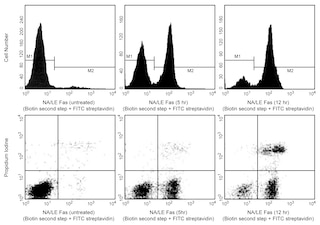
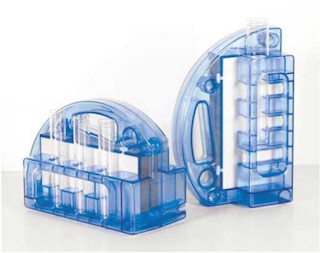
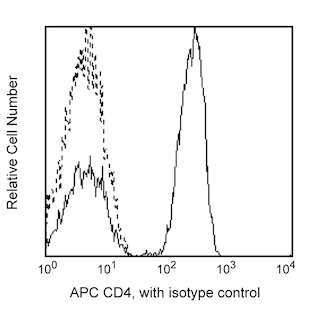

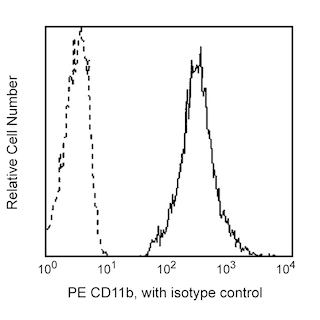
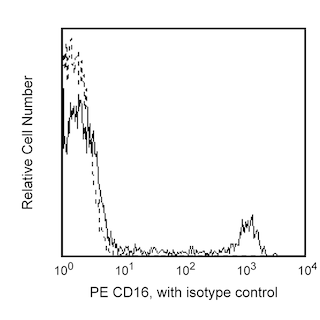
| 描述 | EntrezGene ID |
|---|---|
| Biotin Human CD4 T Lymphocyte Enrichment Cocktail | N/A |
| Streptavidin Particles Plus - DM | N/A |
Please refer to Support Documents for Quality Certificates
Global - Refer to manufacturer's instructions for use and related User Manuals and Technical data sheets before using this products as described
Comparisons, where applicable, are made against older BD Technology, manual methods or are general performance claims. Comparisons are not made against non-BD technologies, unless otherwise noted.
For Research Use Only. Not for use in diagnostic or therapeutic procedures.
Report a Site Issue
This form is intended to help us improve our website experience. For other support, please visit our Contact Us page.